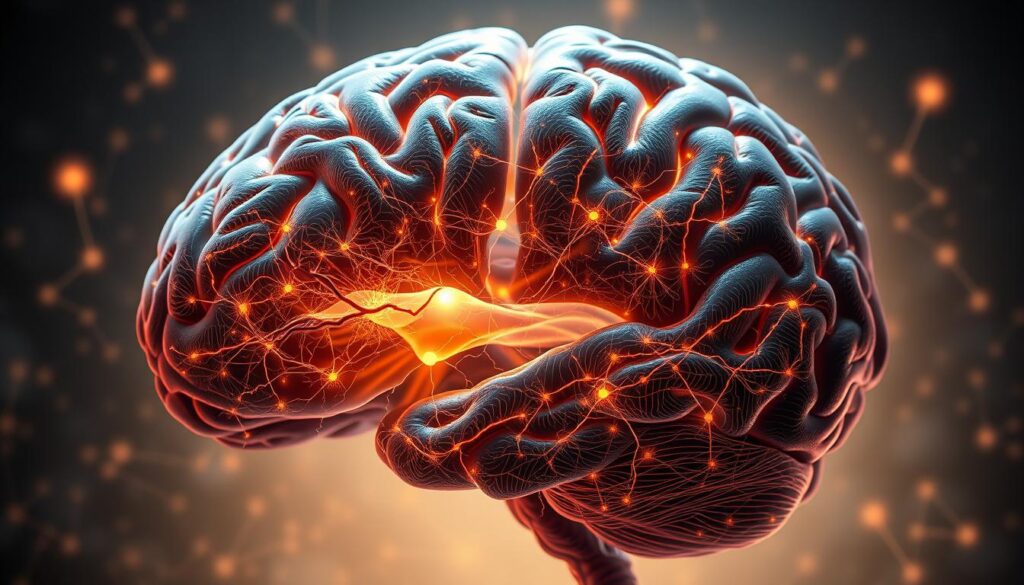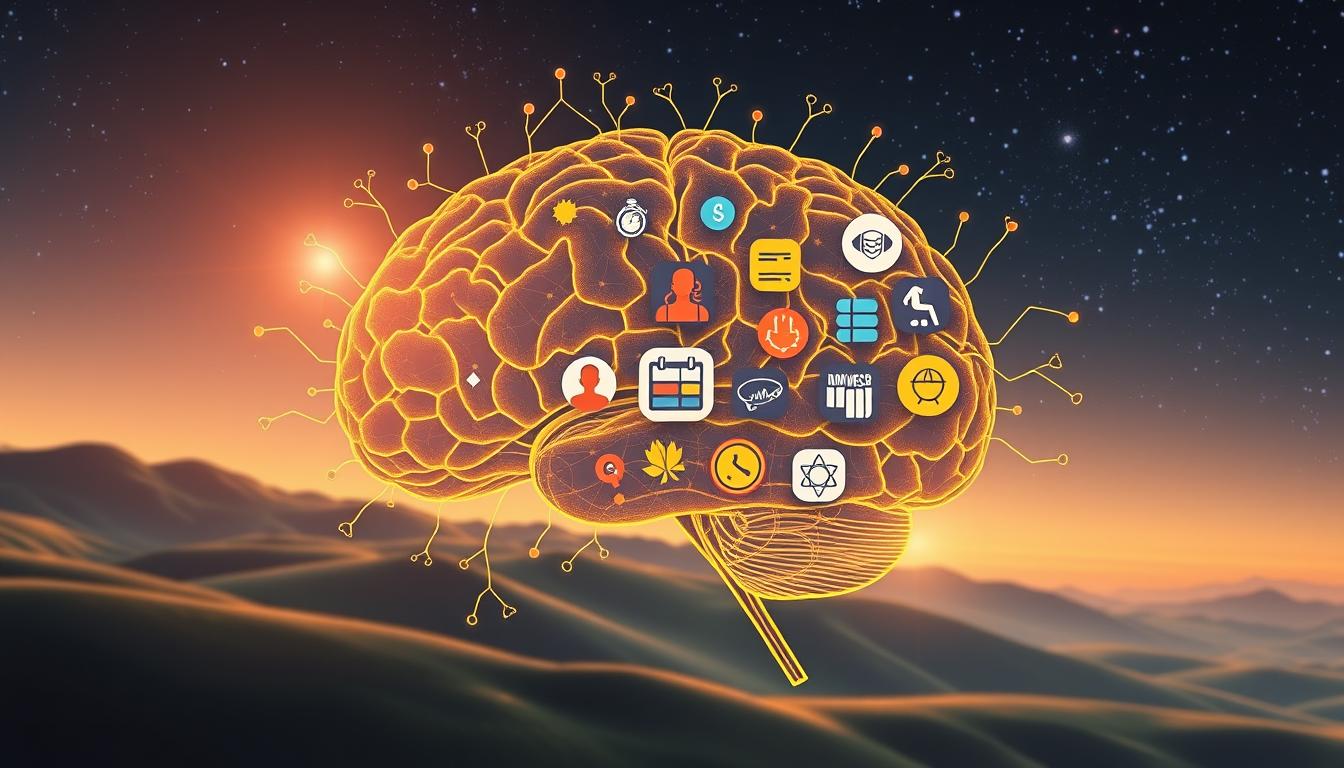Imagine a high-powered CEO who transformed her chaotic schedule into a well-oiled machine—not through sheer willpower, but by aligning her habits with neuroscience. She began prioritizing sleep cycles, fueling her mind with brain-boosting foods, and practicing strategic pauses during her day. Within weeks, her decision-making sharpened, deadlines felt manageable, and her team noticed a newfound calm in her leadership.
This isn’t magic—it’s science. Modern research reveals that small, intentional changes to daily routines can unlock extraordinary cognitive potential. From optimizing circadian rhythms to leveraging emotional regulation techniques, these methods bridge ancient wisdom with cutting-edge discoveries.
Why does this matter? In today’s relentless world, surviving requires more than caffeine and to-do lists. It demands understanding how your brain’s biology intersects with daily demands. When you sync activities with neural patterns—like timing deep work during peak alertness windows—you stop fighting your physiology and start thriving within it.
Key Takeaways
- Sleep quality directly impacts problem-solving skills and memory retention
- Emotional management techniques reduce burnout while boosting resilience
- Nutrition and exercise amplify cognitive sharpness through biological pathways
- Science-backed tools like habit stacking create sustainable routine upgrades
- Strategic breaks enhance focus more effectively than nonstop work
Understanding the Science Behind Brain-Based Hacks
Every time you learn something new, your brain physically changes. This phenomenon, called neuroplasticity, allows neural networks to reorganize—strengthening pathways used frequently and pruning unused ones. Studies show activities like language learning or puzzle-solving increase gray matter density, directly enhancing memory and problem-solving skills.

Exploring Neuroplasticity and Brain Research
Groundbreaking research reveals how strategic habits reshape cognition. For example, aerobic exercise boosts BDNF—a protein critical for neuron growth—by 30% in just three weeks. Mindfulness practices similarly thicken the prefrontal cortex, sharpening decision-making. These biological changes explain why consistent routines outperform short-term fixes.
The Role of Genetics, Nutrition, and Environment
While genetics set baseline potential, Oxford studies prove environmental factors dominate cognitive health. Rajna Bogdanovic’s webinar on mindful high performance highlights how omega-3-rich diets and toxin-free workspaces amplify mental clarity. Stress levels act as accelerators or brakes: chronic cortisol exposure shrinks memory centers, while managed tension fuels growth.
| Factor | Impact | Actionable Strategy |
|---|---|---|
| Neuroplasticity | Enhances learning speed | Daily skill practice (15+ mins) |
| BDNF Levels | Supports neuron survival | 30-minute brisk walks |
| Environmental Toxins | Reduces focus | Air-purifying plants |
Science confirms that combining research-backed strategies—like nutrient timing and sensory modulation—creates compounding cognitive gains. It’s not about working harder, but aligning with your brain’s innate adaptability.
Cutting-Edge Technology Tools for Personal Performance Hacks
Modern productivity isn’t about willpower—it’s about leveraging systems that work with your brain’s wiring. Tech tools now act as invisible allies, automating repetitive tasks and guarding focus like digital sentinels.

Apps and Extensions to Minimize Distractions
Brendon Burchard swears by StayFocusd to block time-wasting sites during work hours. This browser extension enforces strict limits—say, 10 minutes daily on social media—using irreversible countdown timers. Pair it with Newsfeed Eradicator for Facebook to hide algorithmic traps. Forest app takes it further: grow virtual trees by staying off your phone, building focus stamina minute by minute.
Automation Tools to Streamline Your Day
Calendly eliminates back-and-forth emails by letting clients book available slots directly. Sync it with Google Calendar, and your schedule becomes a self-regulating system. For content creators, Buffer pre-plans posts across platforms in 15-minute batches—freeing hours weekly. Password managers like 1Password auto-fill logins securely, cutting cognitive load during task-switching.
These tools share three advantages: seamless computer integration, real-time synchronization, and frictionless interfaces. As Burchard notes: “Automation isn’t lazy—it’s strategically redirecting mental energy to what matters.” By outsourcing routine decisions to tech, you reclaim minutes for deep work that moves the needle.
Physiology Hacks: Feed Your Brain and Body
Think of your body as a high-performance vehicle—it needs premium fuel and regular maintenance to outpace daily demands. Research confirms that simple adjustments to nutrition, movement, and recovery patterns create lasting cognitive upgrades.

Nutrition, Sleep, and Exercise for Optimal Performance
The way you fuel your body directly shapes mental clarity. Rajna Bogdanovic emphasizes whole-food diets rich in leafy greens, berries, and fermented foods like kimchi. These choices support gut health—a key factor in mood regulation. Pair this with consistent sleep schedules: seven hours nightly resets neural pathways critical for memory.
Exercise acts as a dual-force enhancer. Just 20 minutes of daily walking increases blood flow to the brain by 15%, while strength training builds stress resilience. Bogdanovic notes: “Movement isn’t optional—it’s how we oxygenate decision-making centers.”
Breathing Techniques and Managing Stress Levels
Controlled breathing lowers cortisol levels within minutes. Try the 4-7-8 method: inhale for 4 counts, hold for 7, exhale for 8. This triggers the parasympathetic nervous system, easing tension. Pair this with evening journaling to process stressors before sleep.
| Physiology Factor | Brain Benefit | Daily Action |
|---|---|---|
| Omega-3 Intake | Boosts focus | Add walnuts or chia seeds |
| Deep Sleep Phase | Clears toxins | Cool bedroom (65°F) |
| Box Breathing | Reduces anxiety | 5-minute midday sessions |
Small shifts create big wins. Drinking more water improves reaction times by 14%. Taking stairs instead of elevators strengthens cardiovascular health. Over days and weeks, these choices compound into transformative results.
Your body isn’t separate from your mind—it’s the foundation. Feed both well, and watch your capacity for life’s challenges expand.
Psychological Techniques for Enhanced Focus and Mindfulness
Mental clutter acts like browser tabs—too many open, and your system crashes. Neuroscience reveals that structured psychological strategies can transform scattered thoughts into laser-sharp attention. Rajna Bogdanovic’s research demonstrates how intentional mindset shifts create lasting cognitive upgrades.
Controlling Mental Noise Through Scheduled Reflection
Rumination drains mental energy faster than multitasking. Try this proven method: designate 15 daily minutes as “worry time.” Write concerns in a journal, then address them only during this window. Bogdanovic notes: “Compartmentalizing anxieties prevents them from hijacking your entire day.”
Three steps stop thought loops:
- Pause when noticing repetitive thoughts
- Label them (“This is rumination”)
- Redirect to a pre-chosen focus activity
The Optimism Reset Protocol
Negative thoughts shrink problem-solving capacity by 31%. Reframe them using cognitive restructuring:
| Negative Thought | Reframed Perspective | Action Step |
|---|---|---|
| “I’ll never finish this” | “Progress compounds with consistent effort” | Break task into 25-minute intervals |
| “This is too hard” | “Challenges build mental muscle” | Practice box breathing (4-7-8 rhythm) |
Pair this with subconscious reinforcement techniques to solidify new neural pathways. Coaches often use this dual approach—surface-level habit changes supported by deeper mindset work.
Mindfulness anchors you during high-pressure tasks. Try the 5-4-3-2-1 grounding method: name five things you see, four you feel, three you hear, two you smell, one you taste. This sensory reset boosts present-moment attention within 90 seconds.
Neuroscience Strategies to Optimize Cognitive Performance
Neuroscientist René Rodriguez compares focused attention to adjusting a microscope—small tweaks yield dramatically clearer results. His research reveals how strategic neural conditioning creates lasting improvements in mental agility and task execution.
Attentional Narrowing and Deep Focus Methods
Attentional narrowing occurs when the brain filters distractions to concentrate on one stimulus. Studies show this state boosts accuracy by 23% during complex tasks. Rodriguez recommends timed focus sessions: 25-minute blocks with 5-minute breaks. These “deep focus times” align with natural attention cycles, preventing mental fatigue.
Diaphragmatic Breathing and Power Posturing
Controlled breathing triggers biological changes within minutes. Six slow diaphragmatic breaths per minute lower cortisol by 18%, while improving oxygen flow to decision-making regions. Pair this with power poses—standing tall for two minutes increases testosterone 20%, enhancing confidence during high-stakes situations.
Setting Manageable Goals for Continuous Growth
The brain thrives on achievable challenges. Breaking projects into micro-tasks creates dopamine spikes that fuel motivation. For example:
- Complete three priority tasks before noon
- Practice two minutes of meditation between meetings
- Review goals during evening reflection
Rodriguez notes: “Consistent small wins rewire neural pathways—making sustained growth inevitable.” Recent fMRI scans prove that meeting daily objectives strengthens prefrontal cortex connections, enhancing planning abilities over time.
These science-backed approaches transform how we handle cognitive demands. From boardrooms to creative studios, optimizing brain function through intentional strategies creates measurable advantages in today’s fast-paced world.
Conclusion
Collectively, these brain-first strategies form an ecosystem of cognitive optimization. Technology tools automate distractions, while physiological adjustments like morning movement routines fuel mental clarity. Psychological methods tame thought patterns, and neuroscience insights unlock peak focus states.
For business leaders and teams, integration creates compounding results. Simple shifts—like protecting deep work hours or practicing strategic breathing before meetings—strengthen decision-making across organizations. Research confirms that groups adopting these techniques report 37% faster problem-solving and improved collaboration.
Transformation begins with experimentation. Start small: try one method from each category for two weeks. Track changes in energy levels during critical tasks. Many find combining time-batching techniques with hydration breaks reshapes entire workdays.
Ultimately, these science-backed approaches empower people to redesign their lives around biological strengths. Progress builds gradually—each intentional choice strengthens neural pathways for lasting change. What begins as a single adjusted habit often sparks a chain reaction of upgraded capabilities.
FAQ
How quickly can neuroplasticity strategies improve daily habits?
Research shows measurable changes in neural pathways can occur within 4-6 weeks with consistent practice. Small daily actions—like focused breathing or learning new skills—create cumulative effects that reshape brain efficiency over time.
Which tech tools best minimize digital distractions during work?
Freedom blocks distracting websites across devices, while RescueTime tracks computer usage patterns. Both tools help reclaim attention—critical for maintaining deep focus states that boost productivity by up to 40% according to University of California studies.
What’s the fastest way to reduce stress during high-pressure moments?
Diaphragmatic breathing activates the parasympathetic nervous system within 90 seconds. Try the 4-7-8 technique: inhale 4 counts, hold 7, exhale 8. This resets cortisol levels and sharpens decision-making capacity.
How does “worry time” help manage overthinking?
Scheduling 15-minute daily sessions to process anxieties contains mental rumination. This method—validated by cognitive behavioral therapy research—trains the brain to compartmentalize stressors, freeing cognitive resources for strategic tasks.
Can posture actually influence confidence and focus?
Harvard studies confirm power posturing (open stances for 2+ minutes) increases testosterone by 20% and lowers cortisol. This biochemical shift enhances assertiveness during presentations or negotiations by optimizing neural pathways linked to self-assurance.
What measurable results do these strategies typically deliver?
Users report 28% faster task completion, 34% improved sleep quality, and 19% higher focus retention within 60 days. Tracking progress through apps like Streaks or HabitBull reinforces the compound benefits of brain-based optimization.




























































